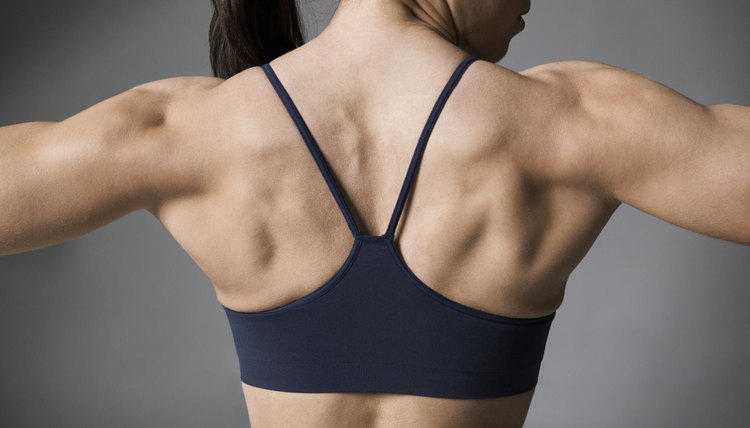What does fact checked mean?
At SportsRec, we strive to deliver objective content that is accurate and up-to-date. Our team periodically reviews articles in order to ensure content quality. The sources cited below consist of evidence from peer-reviewed journals, prominent medical organizations, academic associations, and government data.
The information contained on this site is for informational purposes only, and should not be used as a substitute for the advice of a professional health care provider. Please check with the appropriate physician regarding health questions and concerns. Although we strive to deliver accurate and up-to-date information, no guarantee to that effect is made.
Reverse Vs. Forward for a Shoulder Shrug

Shoulder shrugs are an essential exercise for developing the trapezius muscles. Used by fitness buffs to help achieve the classic “V” body shape and to strengthen the shoulders and grip, the shoulder shrug exercise comes in several variations. Understanding these variations, combined with proper technique, will help you get the most out of your workout while reducing your risk for injury.
Basics
You can perform shoulder shrugs with a pair of dumbbells or with a barbell. In the basic form of the exercise, your feet should be spaced approximately shoulder-width apart, the dumbbells or barbell held with straight arms, and your shoulders raised up as if you were trying to touch them to your ears. Avoid cheating by bending your elbows or bouncing from your legs.
Barbell Shrugs
There are two major shoulder shrug variations when using a barbell: the forward or the reverse shrug. The forward, or front, shrug is performed with the barbell held in front of the body. The reverse, or rear, shrug is the exact opposite with the barbell held behind your body and your palms facing rearward. However, you should use caution when performing either barbell shrug variation. First, because the weight is held either in front of or behind your body, you risk straining your back. Second, both forward and reverse shrugs increase your risk of rolling your shoulders either forward or backward, rather then moving them straight up and down. This adds no benefit to the exercise and can result in injury to the rotator cuff or neck.
Dumbbell Shrugs
When using dumbbells to perform shrugs, you should hold the weights at your sides with your palms facing inward. This puts your shoulders in position to move straight up and down, which is the ideal motion for the exercise. Just like with the barbell, you should avoid rolling your shoulders forward or backward during the motion.
Pros and Cons
For most people, performing shoulder shrugs is easier with dumbbells. Dumbbells help keep the shoulders naturally centered in the ideal position for the exercise, discourage rolling of your shoulders and prevent straining of your lower back. Ultimately, your personal preference will dictate the variation you use. In most cases, however, the naturally centered dumbbell shrug will be preferable to either the forward or the reverse barbell shrug.
References
Writer Bio
Joseph McAllister has worked as a writer since 2003. He has more than seven years of experience in training and coaching martial arts. McAllister writes for various websites on a variety of topics including martial arts, competition and fitness. He graduated from Liberty University on a full ride National Merit Scholarship with a Bachelor of Science in print journalism.
